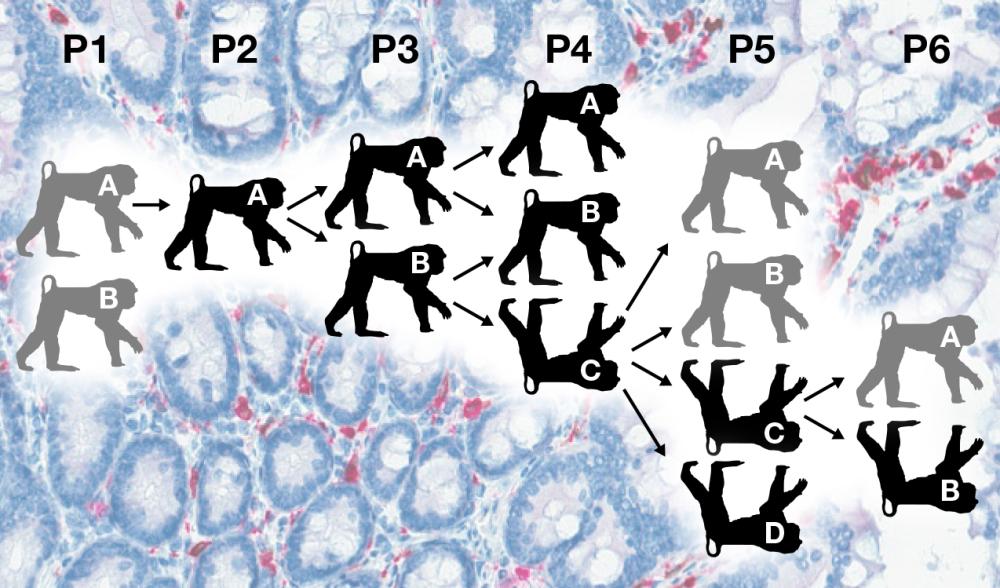By Frank Blanchard, Staff Writer, and Jeff Lifson, Guest Writer
In a research milestone reported in the June 20 issue of the journal Science, scientists have developed a minimally modified version of HIV-1, the virus that causes AIDS in infected humans, that is capable of causing progressive infection and AIDS in monkeys. The advance should help create more authentic animal models of the disease and provide a potentially invaluable approach for faster and better preclinical evaluation of new drugs and vaccines.
Lead authors are Paul Bieniasz, Ph.D., Aaron Diamond AIDS Research Center and Howard Hughes Medical Institute; Jeff Lifson, M.D., AIDS and Cancer Virus Program, Frederick National Laboratory for Cancer Research; Theodora Hatziioannou, Ph.D., Aaron Diamond AIDS Research Center; and Vineet KewalRamani, Ph.D., HIV Drug Resistance Program, National Cancer Institute at Frederick.
While animal models, and especially nonhuman primate models, have been a key part of AIDS research for decades, naturally occurring strains of HIV-1, the virus that infects and causes AIDS in humans, do not productively infect or cause AIDS in monkeys. Until now, the best animal models for AIDS have been different species of Asian macaques infected with variants of simian immunodeficiency virus (SIV), viruses that are found in many species of African nonhuman primates. These viruses typically do not cause AIDS, but can cause AIDS when inoculated into Asian macaques.
While helpful, the use of SIV instead of HIV-1 in these models results in limitations on their utility for preclinical testing of new therapies and vaccines. To address this situation, the collaborating scientists have been working for several years to develop a more authentic nonhuman primate model, one using a virus closer to the HIV-1 that infects humans, to help researchers develop better therapeutic and preventative candidates and streamline their preclinical testing.
For the current research, the group used viral engineering based on emerging knowledge about how primates protect themselves from viral infection and viral adaptation, conducting the research in a particular species of Asian monkey, pigtailed macaques.
The scientists introduced minimal changes into molecular clones of HIV-1, designed to help overcome host proteins in the macaques that restrict HIV-1 replication, and then infected macaques with a mixture of these engineered viruses. After having time to grow and adapt in the first infected macaques, a particular strain became dominant, and this virus was passed on to new, uninfected macaques to allow for further adaptation. The scientists treated some of the macaques with an antibody to transiently deplete certain immune system cells, to allow higher levels of virus production and adaptation. After repeated passages in macaques, the scientists identified a lineage of HIV-1, with minimal modifications, that was able to reproducibly cause AIDS in infected macaques, with the animals developing tumors and opportunistic infections that parallel conditions seen in untreated HIV-infected humans. Interestingly, the virus adapted, during the passages in the macaques, to overcome one of the restricting host proteins to which the scientists had not engineered resistance in the original inoculated viruses.
The development of combination antiretroviral therapy has turned HIV infection from an essentially untreatable fatal illness, to a treatable chronic condition. However, current treatments do not cure the infection, drug-resistant virus remains a problem, and ongoing efforts seek to develop new classes of antiretroviral drugs. To date, no truly effective vaccine has been developed, but many concepts are in the pipeline and will require preclinical evaluation.
In reporting their results, the scientists noted that the viruses developed in their experiments contain virtually all the known targets for HIV-1 vaccines and drugs. Further development of an animal model along the lines demonstrated by the group could be especially valuable for testing new therapies, preventatives, and approaches for eradicating the AIDS virus.
The research was conducted under a contractor Cooperative Research and Development Agreement between the Frederick National Laboratory for Cancer Research, with Lifson as principal investigator, and the Aaron Diamond AIDS Research Center, with Hatziioannou as principal investigator.
Jeff Lifson, M.D., is the director of the AIDS and Cancer Virus Program.


